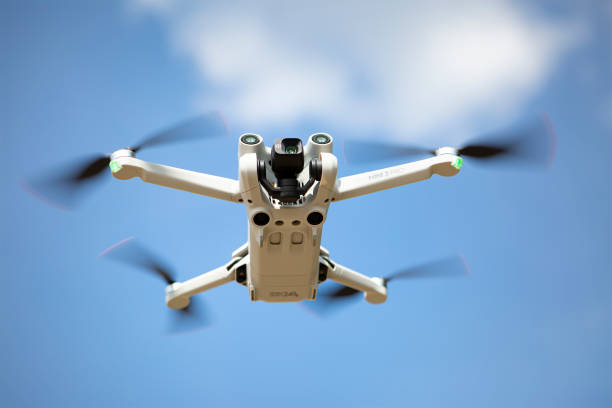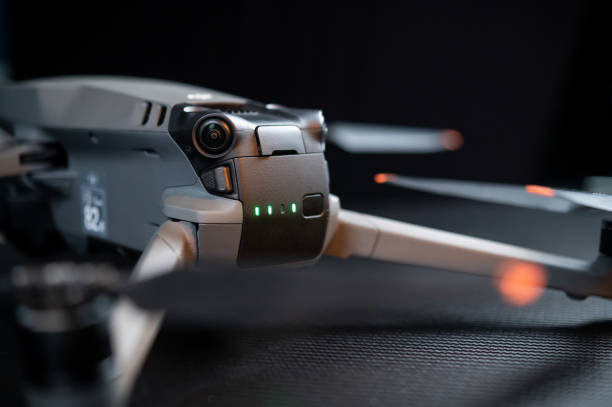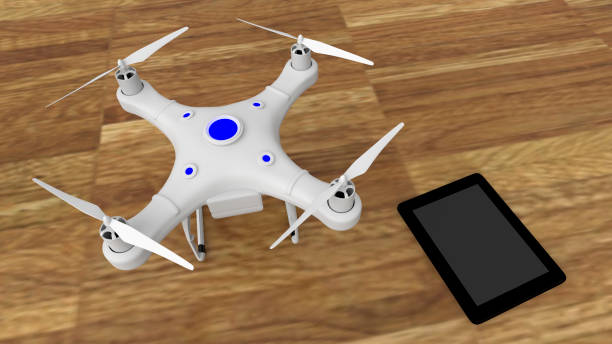In the continuously evolving universe of buyer drones, DJI has dependably set the bar high with its innovative and rich commitments. Two of their hero models, the DJI Air 3 vs. Air 2S, have been causing unsettling influences while keeping watch. Whether you’re a cultivated robot pilot or a youngster wanting to hop into the universe of ethereal photography and videography, picking between these two robots can be a hard decision. In this broad relationship, we’ll isolate each piece of these robots to help you make an informed choice.

Introduction: DJI Air 3 vs. Air 2S,
Before we dive into the basic necessity nuances of the DJI Air 3 vs.Air 2S, could we spread out a few novel circumstances? DJI, a Chinese development association, has been at the forefront of the purchaser drone industry for a really long time. Their things have gained huge omnipresence for their steady quality, convenience, and undeniable level of components. The Air series is esteemed for taking extraordinary consideration of both donning robot fans and master visual specialists and videographers.
In this relationship, we’ll evaluate these two robots across a couple of key classes, including plan, camera limits, flight execution, smart flight modes, far-off controllers, battery term, and, clearly, cost. Close to the furthest limit of this article, you should have a sensible perception of which robot changes best to your necessities and tendencies.
Plan and manufacture quality: DJI Air 3 vs. Air 2S
The arrangement and development nature of a robot are huge factors, especially if you expect to take it on outside endeavors. This is the manner in which the DJI Air 3 vs. Air 2S stack up in such a way:
DJI Air 3: The Air 3 returns with DJI’s smooth and limited plans. It incorporates a foldable arrangement for effortlessness. The structure quality is five stars, with areas of strength that can get through minor impacts.
DJI Air 2S: The Air 2S also displays a foldable plan, making it helpful and travel-friendly. Its get-together quality is phenomenal, offering durability and steadfastness during flights and appearances.
End: To the extent that arrangement and manufacture quality are consistent, the two robots are consistently organized. Both are helpful and advanced, making them sensible for various circumstances.
Camera Capacities:DJI Air 3 vs. Air 2S
The camera is apparently the most essential piece of a robot, especially for picture-takers and videographers. Could we take a gander at the camera limits of the DJI Air 3 vs. Air 2S?
DJI Air 3: The Air 3 is furnished with a 1-inch sensor fit for finding stunning 20MP photos and 5.4K video at 30fps. It offers a 10-cycle assortment, significance for overhauled picture quality, and a wide, special reach, making it sensible for capable photography and videography.
DJI Air 2S: The Air 2S incorporates an equivalent 1-inch sensor; be that as it may, it takes things up an indent with the ability to get 20 MP photos and 5.4K video at 30 fps with 10-cycle assortment significance. Besides, it offers a higher piece rate for an essentially more point-by-point film.
End: While the two robots offer astonishing camera limits, the Air 2S edges ahead with its barely superior video bit rate, which can achieve more point-by-point film.
Flight Execution:DJI Air 3 vs. Air 2S
The presentation of a robot in the air, including rate, strength, and obstacle avoidance, is basic for getting the best possibilities. This is the manner in which the Air 3 and Air 2S contemplate flight execution:
DJI Air 3: The Air 3 components further created motors and flight controllers, allowing it to show up at a most outrageous speed of 68 mph (110 km/h) in game mode. It has similarly redesigned catch repugnance sensors for further security during flight.
DJI Air 2S: The Air 2S offers relative flight execution, with a most extreme speed of 68 mph (110 km/h) in game mode. It similarly displays advanced impediment avoidance development, making it safe to fly in various circumstances.
End: To the extent that flight execution is consistent, the two robots are consistently organized. They offer high rates and reliable deterrent abhorrence, ensuring secure and strengthening flights.
Shrewd Flight Modes:DJI Air 3 vs. Air 2S
Adroit flight modes can further develop your robot flying experience by motorizing explicit tasks and getting novel shots. Could we see how the DJI Air 3 vs. Air 2S looks from this point?
DJI Air 3: The Air 3 goes with a variety of shrewd flight modes, including ActiveTrack 4.0, Spotlight 2.0, and Point of Convergence 3.0. These modes simplify it to get practical shots and track moving subjects unequivocally.
DJI Air 2S: The Air 2S similarly offers an extensive range of smart flight modes, including the recently referenced ActiveTrack 4.0 and Spotlight 2.0. In like manner, it consolidates master shots, a part that normally makes capable video cuts.
End: The two robots offer an extraordinary bunch of shrewd flight modes, simplifying it to get an incredibly raised film. The slight differentiations in these modes are likely not going to be a basic figure for you.
Far-off Controller
The far-off controller is your relationship with the robot, so considering its features and convenience is basic.
DJI Air 3: The Air 3 goes with a more modest and ergonomic distance controller that gives a pleasant handle. It incorporates a significant standard for consistent perception and offers incredible organization.
DJI Air 2S: The Air 2S, in like manner, consolidates a very well-arranged distant controller with a significant standard show. It offers a reliable relationship with the robot and a straightforward connection point.
End: The two robots go with very well-arranged distant controllers that give a phenomenal client experience. Your choice between them will not depend on this component.
Battery Span:DJI Air 3 vs. Air 2S
Battery span is a critical thought, as it determines how long you can keep your robot in the air on a single charge.
DJI Air 3: The Air 3 offers a decent flight time of up to 34 minutes, allowing you to get a ton of film on a single battery.
DJI Air 2S: The Air 2S matches the Air 3’s flight time of up to 34 minutes, ensuring above and beyond time for aeronautical photography and videography.
End: The two robots offer indistinct battery lengths, so this component shouldn’t seriously influence your decision.
Cost:DJI Air 3 vs. Air 2S
Cost is often a unique advantage when picking between two things:
DJI Air 3: The DJI Air 3 was assessed to be imperceptibly higher than the Air 2S, essentially in view of its superior camera limits. Nevertheless, costs in the robot market can change, so checking the latest gauges and arrangements is key.
DJI Air 2S: The Air 2S is generally assessed lower than the Air 3 while offering near execution and features, making it a charming decision for frugal customers.
Assurance: Cost can be a basic component, and the Air 2S may be the more monetarily wise choice for certain clients.
Conclusions: DJI Air 3 vs. Air 2S
In the DJI Air 3 vs. Air 2S stalemate, the two robots are noteworthy contenders, offering exceptional camera capacities, flight execution, shrewd flight modes, and overall structure quality. The choice between them depends upon your specific prerequisites and monetary arrangement.
If you’re a specialist visual craftsman or videographer searching for the best picture quality and wouldn’t worry about monetary arrangements fairly more, the DJI Air 2S with its hardly superior camera components might be your leaning choice. On the other hand, if you’re looking for a reasonable robot with extraordinary execution and additional adaptable monetary plans that oblige retail costs, the DJI Air 2S is a major area of strength for
Finally, your decision should agree with your requirements and how you plan to use the robot. Both the DJI Air 3 and the Air 2S could possibly lift your photography and videography higher than at some other time.

FAQs about DJI Air 3 vs. Air 2S
To address any holding-up requests you could have, the following are a couple of constantly presented requests about the DJI Air 3 vs. Air 2S:
Q1: Might I at any point use the far-off controller from one robot with the other?
A1: No, the far-off controllers are expected to work exclusively with their different robots.
Q2: Are these robots fitting for tenderfoots?
A2: The two robots offer simple-to-utilize features; in any case, beginners could find the DJI more modest than the regular series more suitable for their necessities.
Q3: Do these robots have follow-me modes?
A3: To be sure, both the DJI Air 3 and Air 2S offer undeniable-level follow-me modes like ActiveTrack for following moving subjects.
Q4: What’s the extent of these robots?
A4: The compass can vary; notwithstanding, the two robots offer incredible transmission ranges, allowing you to fly them a couple of kilometers from the distant controller.
Q5: Are additional parts and ruffles instantly open for these robots?
A5: DJI has a wide association of endorsed vendors and online stores, making it modestly easy to find spare parts and embellishments for these robots.
All things considered, whether you pick the DJI Air 3 or the DJI Air 2S, you’re getting a first-rate drone prepared for conveying stunning flying substances. Ponder your specific necessities, tendencies, and monetary arrangement, and you’ll be on your way to finding astounding shots and accounts from the sky.

Really good 👍😊
Nyc bro 🤜